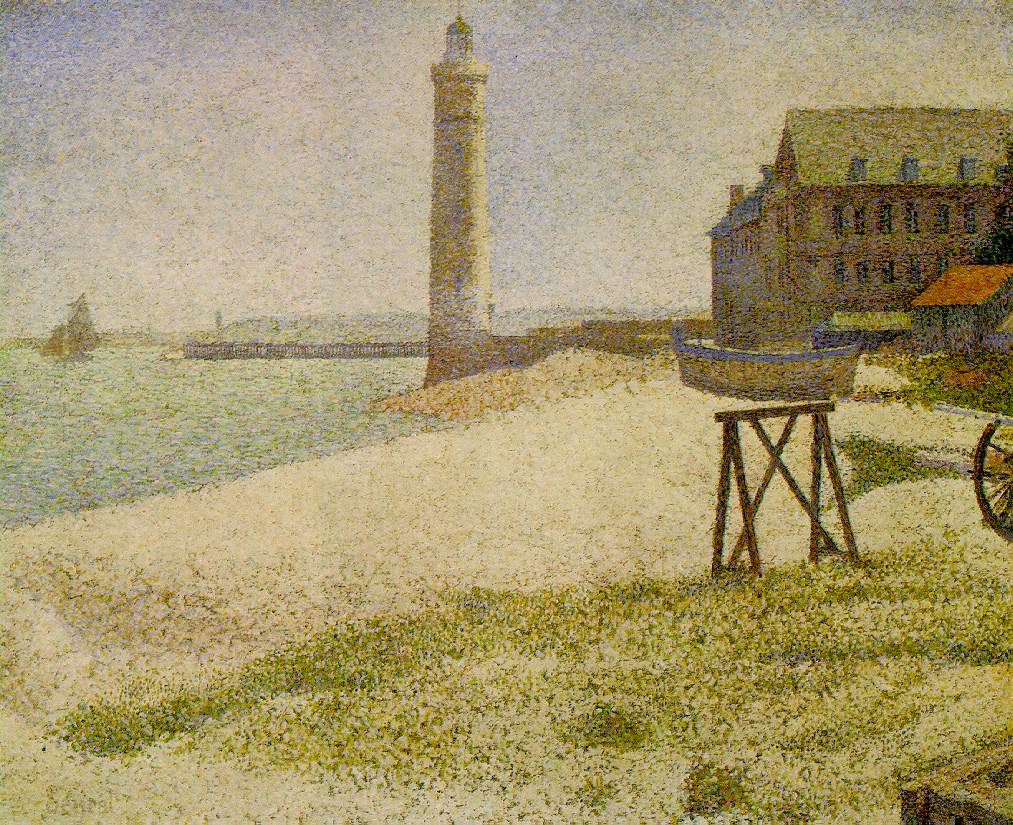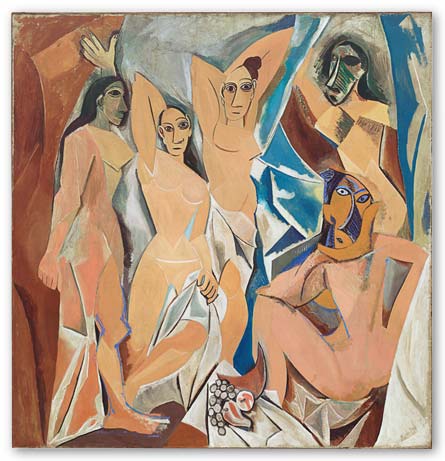The term Impressionism derives from Claude Monet's painting "Impression Sunrise" (1872)

You can read an interesting chronology of this movement and look at some paintings here.
For an overview of French painting in the 19th century, go to the USA National Gallery of Art, where you will also find a discussion of Post-Impressionism.
Post-Impressionism can be exemplified by Georges Seurat's "The Lighthouse at Honfleur" (1886)

Cubism started in Paris in 1908, reached its peak in 1914, and continued into the 20's. Watch this slideshow of works at the London Tate Gallery for an explanation of its features or read this discussion of its features
Picasso's "Les Demoiselles d'Avignon" (1907) forecasts the new style.


You can read an interesting chronology of this movement and look at some paintings here.
For an overview of French painting in the 19th century, go to the USA National Gallery of Art, where you will also find a discussion of Post-Impressionism.
Post-Impressionism can be exemplified by Georges Seurat's "The Lighthouse at Honfleur" (1886)

Cubism started in Paris in 1908, reached its peak in 1914, and continued into the 20's. Watch this slideshow of works at the London Tate Gallery for an explanation of its features or read this discussion of its features
Picasso's "Les Demoiselles d'Avignon" (1907) forecasts the new style.

Virginia Woolf dates the change in "human nature" to December 1910, when the first exhibition of French Post-Impressionist and Cubist painting took place in London.
Can you suggest what elements in common you can find with modernism?
This is an optional activity.
I think that the main elements in common with modernism are the rejection to standards and the need to find new forms of expression. Postimpressionist and Cubist painters experimented with new techniques that helped them to express what they felt and thought as well as what they saw (realistic representations were no longer sufficient in painting). Fragmentation, ambiguity and simultaneity are also some of the features shared. “Cubist painters presented a new reality in paintings that depicted radically fragmented objects, whose several sides were seen simultaneously” (from The Art History Archive). This style helped to demonstrate that there is no ONE reality but rather multiple or different perceptions or interpretations.
ReplyDeleteOn the one hand, Post-Impressionism and Modernism share the importance given to the emotions and to new ways of expressing meaning beyond surfaces. on the other hand, Cubism and Modernism use techniques like fragmentation, simultaneity and multiplicity of perspectives.
ReplyDelete(I'm sorry but I've just seen this question)